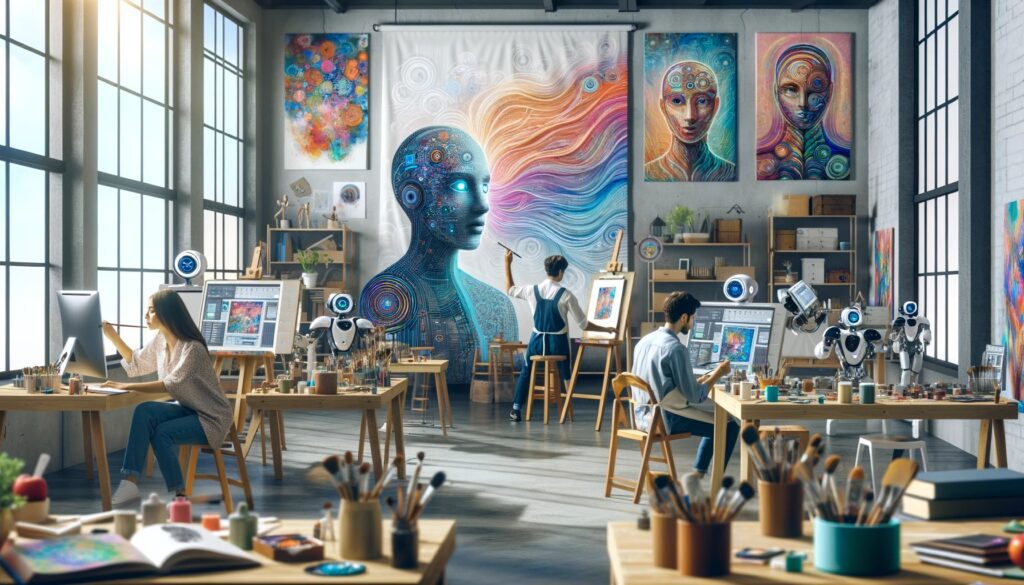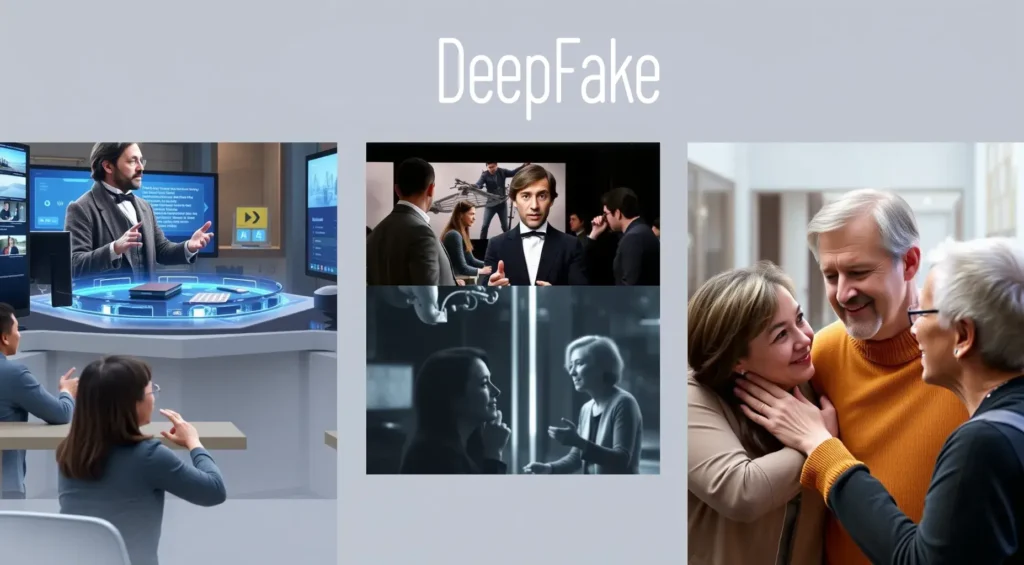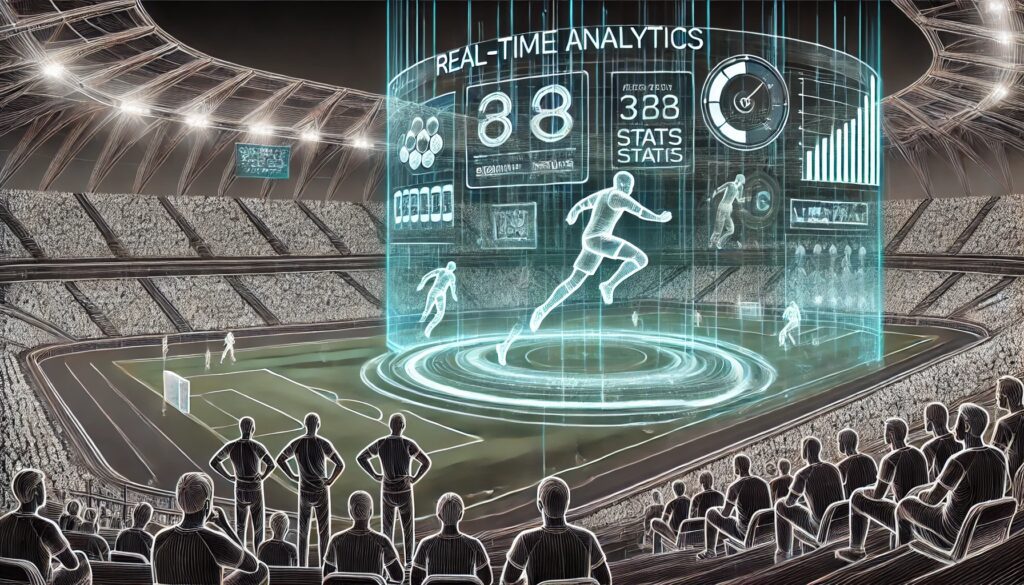
Current Landscape of the Metaverse
Key platforms leading the charge
The Metaverse in 2025 is no longer a fragmented buzzword; it’s a developing digital ecosystem. Meta’s Horizon Worlds, Decentraland, and Roblox continue to evolve, each serving niche markets. Horizon Worlds targets professional collaboration. Decentraland thrives on blockchain integration, while Roblox maintains dominance in gaming and creative content.
Meanwhile, gaming companies like Epic Games are doubling down with Fortnite’s immersive experiences, blending virtual concerts with gameplay. Additionally, new players like South Korea’s Zepeto and enterprise-focused platforms such as Microsoft Mesh are pushing boundaries in how we work, play, and connect digitally.
Major investments by tech giants
Big Tech remains the primary investor in this digital frontier. Apple, long rumored to join the Metaverse, has now entered with lightweight AR glasses and a seamless ecosystem. Google refines AI-based Metaverse tools, while NVIDIA powers the backbone with its Omniverse platform, enabling creators to build expansive, realistic virtual worlds.
The $800 billion Metaverse economy is still growing, but slower than 2022 forecasts predicted. While many investments focus on virtual tools for real-world utility, tech companies are learning to balance hype with long-term infrastructure needs.
The Evolution of Virtual Reality and Augmented Reality

Improvements in hardware and accessibility
2025 has seen a significant leap in VR and AR technology. Devices are lighter, more affordable, and no longer tethered to cumbersome PCs. Apple Vision Pro and standalone Meta Quest devices are now household tools. Innovations in haptics and eye-tracking add realism, creating deeper immersion for users.
Importantly, improved 5G and the onset of 6G networks ensure seamless experiences. Users can enter fully interactive, persistent environments on devices that are increasingly affordable and intuitive.
VR/AR’s role in everyday life
Today, AR-enhanced shopping, real-world navigation overlays, and hybrid workspaces are the norm. For example, virtual try-on features for clothing and furniture have redefined e-commerce. AR navigation, blending physical maps with live updates, is transforming logistics and personal travel alike.
Additionally, professional tools like immersive design platforms are helping architects and engineers simulate projects in virtual spaces before real-world implementation.
Socialization and Digital Communities
How people interact and socialize in the Metaverse
Socializing in the Metaverse is a lot like modern social media—only more interactive. Instead of a static profile picture, users now showcase themselves with customizable avatars that roam different worlds. Voice chat rooms, virtual meetups, and fully immersive group events are thriving.
Cultural events like virtual film premieres and live concerts are gaining mainstream appeal. In contrast, personal spaces—like virtual “homes” where friends visit—blur the line between online and real-life interactions.
Emerging trends in community building
Decentralized autonomous organizations (DAOs) are at the heart of the Metaverse’s community-building efforts. These member-driven communities, often formed around shared goals or assets, make online interactions feel more democratic and purposeful.
People are also creating micro-Metaverses, curated spaces for tight-knit groups like gaming clans, book clubs, or virtual classrooms. These trends emphasize personalized, meaningful interactions over mass, impersonal digital spaces.
Business Adoption of the Metaverse
Corporate use cases
Businesses are fully embracing the Metaverse as a practical tool. Virtual workspaces reduce the need for expensive office leases, offering immersive meeting rooms for global teams. Interactive training simulations, particularly in healthcare and manufacturing, are standard practice now.
Retail brands are thriving with digital storefronts and direct-to-avatar sales of virtual goods, like skins, accessories, and NFTs. Even real estate companies are selling premium plots in high-traffic virtual zones.
Industries leveraging the Metaverse effectively
While gaming continues to dominate, education, healthcare, and manufacturing are catching up. Teachers use the Metaverse for virtual field trips and interactive lessons. Meanwhile, surgeons are practicing high-risk procedures on AR-enhanced dummies in shared VR spaces, improving training outcomes.
Manufacturers use digital twins, virtual replicas of real-world objects or systems, to streamline operations and reduce costs.
Challenges and Limitations in 2025
Scalability, security, and interoperability issues
The Metaverse is growing, but scaling is still a bottleneck. Different platforms remain siloed, making it hard to transition avatars or digital items across ecosystems. Cybersecurity threats—ranging from identity theft to fraud—are also plaguing user confidence.
Data privacy remains a top concern. As users spend more time in virtual spaces, platforms face scrutiny for how they collect and monetize personal data.
User adoption barriers
While the Metaverse offers a lot, it’s not for everyone. High-speed internet is still inaccessible in many parts of the world, limiting global adoption. Furthermore, VR/AR experiences can induce discomfort, such as motion sickness, making the technology less inclusive.
Users also cite a lack of compelling content as a deterrent. Beyond gaming and professional tools, there’s little that truly hooks non-tech-savvy users into daily Metaverse engagement.
The Role of Artificial Intelligence in Shaping the Metaverse

AI-Driven Avatars and Personalization
Artificial intelligence is transforming how users engage with the Metaverse. AI-powered avatars mimic realistic facial expressions, movements, and even speech, creating a deeper sense of immersion. These avatars can adapt their behaviors to suit different contexts, whether for a casual hangout or a professional meeting.
AI also personalizes virtual environments. For example, users entering a virtual mall might see product suggestions tailored to their preferences, thanks to predictive algorithms. This customization encourages prolonged engagement and enhances user satisfaction.
Procedural Content Generation
AI is streamlining the creation of expansive digital worlds. With procedural generation, developers can generate unique landscapes, buildings, and objects dynamically, saving both time and resources. This innovation enables smaller developers to compete with industry giants, fostering diversity in the Metaverse’s offerings.
Additionally, AI NPCs (non-playable characters) in games or virtual workspaces now provide realistic, context-aware interactions, enhancing the user experience.
Sustainability in the Metaverse

Greener Virtual Worlds
Sustainability is a growing priority in 2025’s Metaverse. Major platforms are investing in green data centers and energy-efficient servers to reduce their environmental impact. Blockchain technology, integral to many virtual economies, is shifting toward energy-efficient solutions like Proof of Stake.
Additionally, companies are exploring carbon offset initiatives for their Metaverse operations. For instance, some virtual event organizers plant trees based on event participation, making digital experiences more eco-conscious.
Reducing Physical World Impact
The Metaverse reduces the need for physical resources in unexpected ways. Virtual conferences replace large-scale, resource-intensive events, and digital workspaces decrease daily commutes. These shifts contribute to significant carbon footprint reductions while encouraging a more sustainable lifestyle for users.
Education and Skill Development in the Metaverse
Revolutionizing Learning Experiences
Educational institutions are tapping into the Metaverse to offer immersive learning experiences. Virtual classrooms transport students to historical landmarks or simulations of scientific phenomena, transforming traditional education into something interactive and engaging.
Additionally, vocational training thrives in the Metaverse. Surgeons, pilots, and engineers practice high-stakes scenarios using realistic VR simulations, reducing risks while enhancing expertise.
Upskilling for the Metaverse Economy
As the Metaverse expands, so does its job market. Digital architects, avatar designers, and Metaverse content creators are in high demand. To meet these needs, specialized courses teach coding, 3D modeling, and blockchain development, equipping workers with future-ready skills.
Online academies like Udemy and Coursera now offer Metaverse-centric certifications, bridging gaps in this emerging sector.
The Rise of Virtual Economies
NFTs and Digital Ownership
NFTs (non-fungible tokens) remain at the heart of the Metaverse’s economic structure. From virtual real estate to exclusive in-game items, NFTs grant users tangible ownership in virtual spaces. By 2025, the market has matured, with stricter regulations ensuring fair play and security for investors.
The rise of interoperable assets—NFTs usable across multiple platforms—is also revolutionizing how users interact with digital goods, paving the way for a more connected Metaverse economy.
Virtual Commerce and the Creator Economy
Virtual storefronts have become a staple for businesses and creators alike. Entrepreneurs are selling everything from customized avatar clothing to branded digital environments. Platforms like Sandbox and Roblox empower creators to monetize their skills, contributing to a booming digital economy.
Big brands, too, are thriving in this space. Fashion houses like Gucci and Balenciaga now offer digital collections, while fast-food chains like McDonald’s experiment with Metaverse pop-ups for unique promotions.
Ethical and Societal Implications
The Digital Divide
While the Metaverse promises exciting opportunities, it risks deepening existing inequalities. High costs for VR/AR devices and fast internet access mean the technology remains inaccessible to many, especially in developing regions. Bridging this digital divide is crucial to creating an inclusive Metaverse.
Digital Well-being and Mental Health
Excessive time in virtual environments can blur the line between reality and fantasy, potentially leading to addiction or isolation. In response, developers are incorporating wellness tools, such as reminders to take breaks and features encouraging positive interactions.
Ethical debates also focus on data rights. As users spend more time in the Metaverse, platforms face increased scrutiny about how they collect and monetize personal information.
Integration with Smart Technologies
The Internet of Things (IoT) Meets the Metaverse
By 2025, the Metaverse and IoT are converging to create smarter, more interactive environments. IoT-enabled devices, like wearables and smart home systems, now feed real-time data into the Metaverse. For example, a fitness tracker could sync with a virtual gym, creating personalized workout simulations based on your real-world activity.
This integration bridges the gap between physical and virtual worlds, ensuring that digital interactions reflect tangible realities. Enhanced by AI and IoT sensors, users experience more responsive and interconnected digital spaces.
Autonomous Vehicles and the Metaverse
Autonomous vehicles now come with Metaverse connectivity, offering passengers immersive entertainment or productivity experiences during commutes. Whether attending virtual meetings, exploring digital art galleries, or gaming, this fusion transforms daily travel into an interactive, connected opportunity.
Governance and Regulation in the Metaverse
Evolving Legal Frameworks
The rapid expansion of the Metaverse has forced governments to establish clearer regulations. Issues like digital property rights, user safety, and taxation on virtual goods are now key focuses. Many countries require platforms to comply with data privacy laws like GDPR or local equivalents.
Regulators are also working on frameworks to prevent monopolization, ensuring smaller developers have a stake in this growing ecosystem. Platforms with transparent policies on user rights and governance are emerging as industry leaders.
Decentralization and User Autonomy
Decentralization is becoming the cornerstone of Metaverse governance. Platforms built on blockchain technology allow users to vote on changes through DAOs, giving them a greater say in how communities are managed. This model empowers users while reducing corporate overreach.
At the same time, ethical AI practices are being debated, particularly regarding NPCs and algorithmic moderation of virtual spaces.
The Metaverse’s Role in Cultural Preservation
Digitizing Historical Landmarks and Traditions
The Metaverse is becoming a hub for cultural preservation. Governments and nonprofits are partnering with platforms to digitize historical sites, allowing users to explore places like ancient Rome or Machu Picchu from their homes. Interactive features make these experiences educational and immersive.
Local traditions and art forms are also being archived, ensuring that unique cultural elements thrive in a digital format for future generations. Users can attend virtual festivals or explore reconstructed monuments with unprecedented access and detail.
Fostering Global Connections
Through shared virtual spaces, the Metaverse promotes cross-cultural exchange. People from different countries can now collaborate, socialize, and learn together in ways that feel natural and engaging. This global connectivity fosters empathy and understanding, breaking down barriers between nations.
Health and Wellness Innovations
Virtual Healthcare Solutions
Healthcare in the Metaverse has advanced significantly. Virtual clinics allow patients to consult doctors using VR, complete with real-time biometric data overlays for precise diagnoses. Meanwhile, AR-powered rehab programs guide patients through physical therapy exercises, making recovery more engaging.
Mental health is another key area. Guided meditation apps and VR-based therapy sessions immerse users in calming environments, offering effective tools to combat stress and anxiety.
Fitness Gamification in the Metaverse
Fitness is no longer a chore with gamified VR experiences. Users can compete in virtual marathons, participate in gamified workout challenges, or explore fantastical landscapes while staying active. Platforms like Supernatural combine fitness and fun, promoting healthier lifestyles in the digital age.
Long-Term Predictions for the Metaverse
A Fully Interoperable Ecosystem
By 2030, experts predict the rise of a universal Metaverse ecosystem, where users can seamlessly move assets, avatars, and identities across platforms. Standardized protocols are being developed to break down existing silos, ensuring a unified experience across virtual worlds.
Interoperability could open the door to massive virtual collaborations, allowing companies, creators, and users to build together in a shared digital economy.
Blurring Real and Virtual Realities
As AR and VR merge into mixed reality experiences, the line between the real world and the Metaverse continues to blur. Augmented layers on real-world objects make daily life more efficient, while fully immersive experiences allow users to escape into richly detailed virtual worlds.
The future of the Metaverse hinges on its ability to complement, rather than replace, the physical world. This symbiosis will define how the Metaverse evolves over the next decade.
A Society Built on Digital Innovation
In the long run, the Metaverse could redefine societal norms, from how we work to how we socialize and entertain ourselves. Cities might evolve into smart urban hubs where digital overlays guide infrastructure, while global events like elections or summits could take place entirely in virtual spaces.
The question isn’t whether the Metaverse will shape the future—it’s how deeply it will integrate into every facet of our lives.
Final Thoughts (to conclude the article)
The Metaverse in 2025 is a dynamic blend of potential and challenges. While significant strides have been made in technology, adoption, and infrastructure, hurdles remain. As innovation continues, the Metaverse promises to be more than a buzzword—it’s poised to become a critical extension of our reality. Its true potential lies in bridging gaps between physical and digital worlds, fostering connections, and redefining how we live, work, and play.
Resources
Official Reports and Industry Insights
- McKinsey & Company: Value Creation in the Metaverse
- PwC: The Future of the Metaverse
- Accenture: Technology Vision 2025
Tech Platforms and Innovations
Blockchain and Virtual Economies
VR/AR Devices and Applications
- Apple Vision Pro
- Meta Quest
- HTC Vive
Educational and Training Platforms
Ethics and Governance





